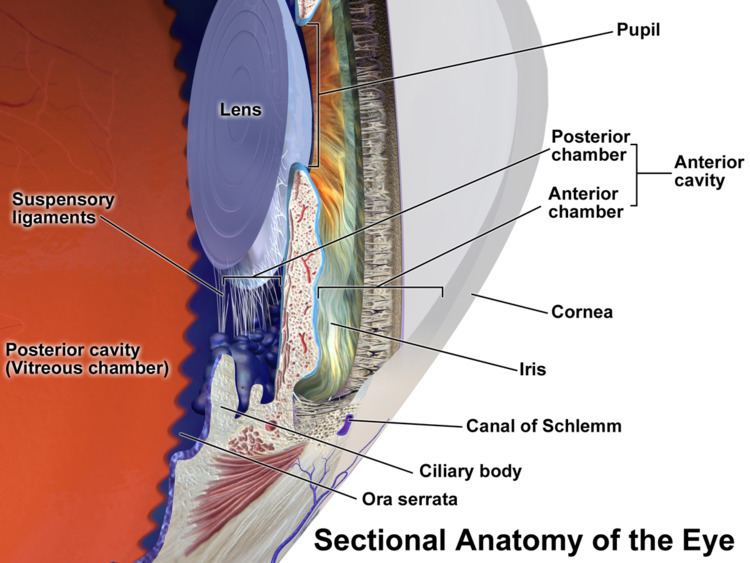Latin zonula ciliaris TA A15.2.05.015 | Dorlands/Elsevier z_01/12870397 FMA 58838 | |
 | ||
The zonule of Zinn (Zinn's membrane, ciliary zonule) (after Johann Gottfried Zinn) is a ring of fibrous strands connecting the ciliary body with the crystalline lens of the eye. These fibers are sometimes collectively referred to as the suspensory ligaments of the lens.
Contents
Development
The ciliary epithelial cells of the eye probably synthesize portions of the zonules.
Anatomy
The zonule of Zinn is split into two layers: a thin layer, which lines the hyaloid fossa, and a thicker layer, which is a collection of zonular fibers. Together, the fibers are known as the suspensory ligament of the lens. The zonules are about 1–2 μm in diameter.
The zonules attach to the lens capsule 2mm anterior and 1 mm posterior to the equator, and arise from the pars plana region of the ciliary epithelium and pass forward closely related to the lateral surfaces of the ciliary process of the pars plicata.
When colour granules are displaced from the Zonules of Zinn (by friction against the lens), the irises slowly fade. In some cases those colour granules clog the channels and lead to Glaucoma Pigmentosa.
The zonules are primarily made of fibrillin, a connective tissue protein. Mutations in the fibrillin gene lead to the condition Marfan syndrome, and consequences include an increased risk of lens dislocation.
Clinical appearance
The zonules of Zinn are difficult to visualize using a slit lamp, but may be seen with exceptional dilation of the pupil, or if a coloboma of the iris or a subluxation of the lens is present. The number of zonules present in a person appears to decrease with age. The zonules insert around the outer margin of the lens (equator), both anteriorly and posteriorly.
